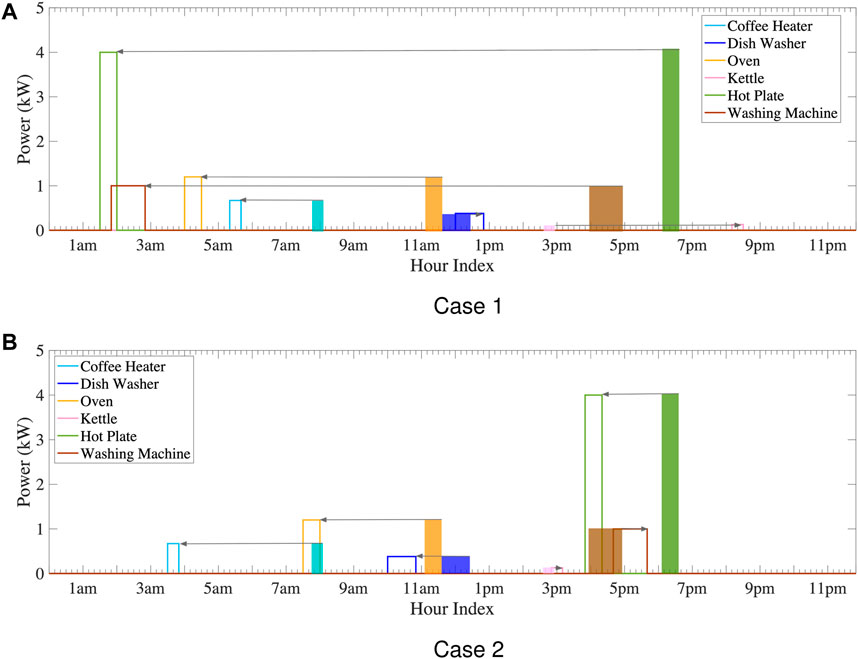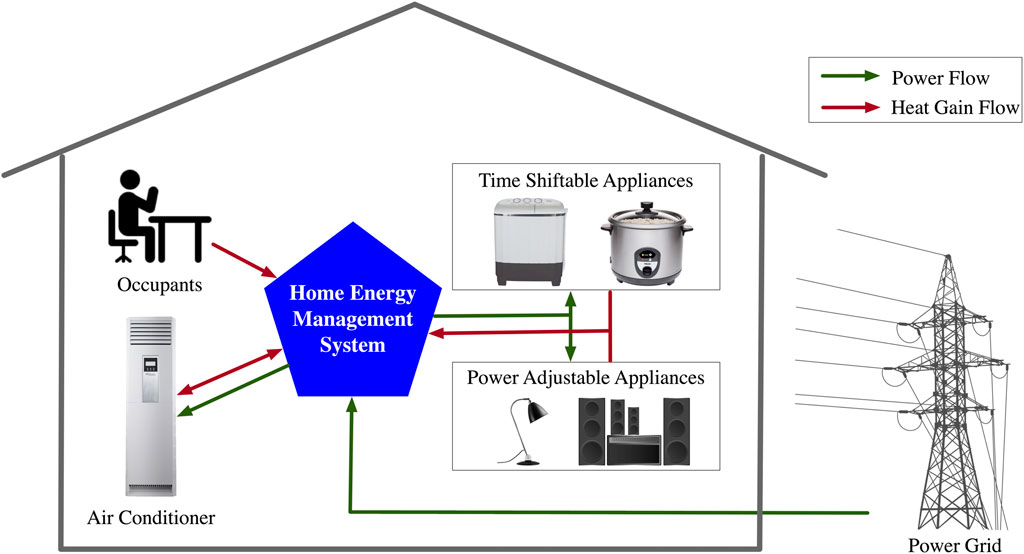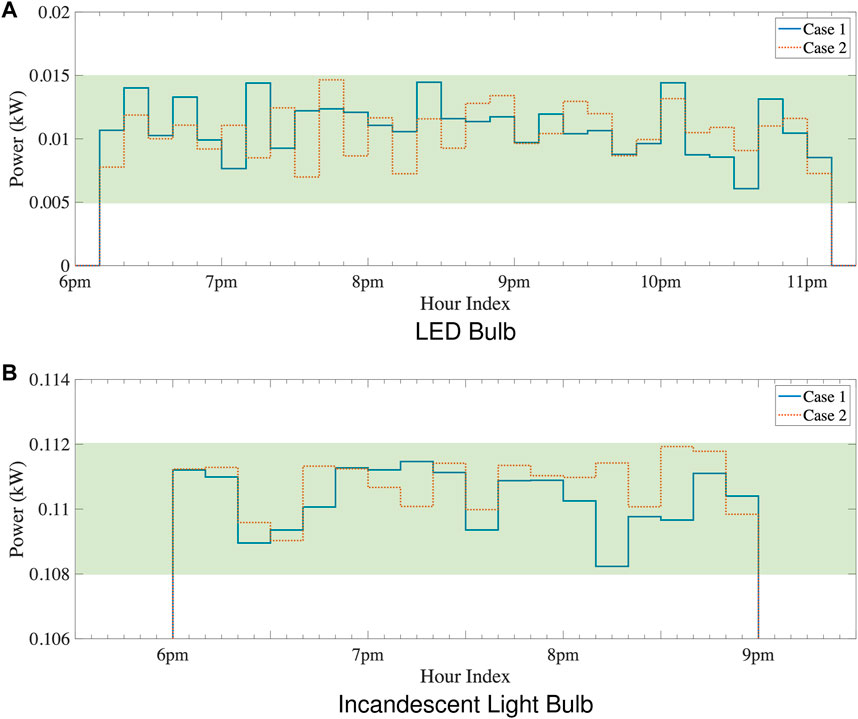- 1School of Civil Engineering, The University of Sydney, Sydney, NSW, Australia
- 2School of Electrical and Information Engineering, Changsha University of Science and Technology, Changsha, China
A Corrigendum on
Integrated Household Appliance Scheduling With Modeling of Occupant Satisfaction and Appliance Heat Gain
by Zhao, Z., Luo, F., Zhang, Y., Ranzi, G., and Su, S. (2021). Front. Energy Res. 9:724 189. doi: 10.3389/fenrg.2021.724 189
In the original article, the Keywords were incorrect: “demand response, smart home, building energy, smart grid, demand side management.” The correct version of the Keywords is as follows: “demand response, smart home, building energy, smart grid, demand side management.”
In the Results and Discussion section, sub-section “Simulation Study”, paragraph 4, the following line was incorrect: “The optimized results of the LED bulb and incandescent light bulb under Case 1 and Case 2 are shown in Figure 14A, respectively, where the green block represents the power range of the LED bulb,” The correct version of this line is as follows: “The optimized results of the LED bulb and incandescent light bulb under Case 1 and Case 2 are shown in Figures 14A,B, respectively, where the green block represents the power range of the LED bulb.”
The indexes of some equations were also incorrect. The corresponding equations were not indexed as (1), (2), and (17), therefore, all equations in the original article have been re-indexed from (1) to (26). According to the new indexes of the equations:
The following line in section “Modeling of Home Energy Resources,” sub-section “Model of Air Conditioner,” “Room’s Thermal Model,” paragraph two was incorrect: “The heat gain
Further, the following line in section “Simulation Study,” sub-section “Simulation Setup,” paragraph two was incorrect: “note that the heat gain released by the jth power adjustable appliance at the tth time slot can be calculated by Eq. 29.” The correct version of this line is as follows: “note that the heat gain released by the jth power adjustable appliance at the tth time slot can be calculated by Eq. 26.”
Also, the following line in the “Formulation of Home Energy Management Model” section, last paragraph was incorrect: “Constraint 24) restricts the adjustable power range of each PAA at each of its operational time slots. Constraint 25) ensures that each TSA can only be in the “ON” state in its task execution period. Constraint 26) ensures that each PAA does not consume power except at its operational time slot.” The correct version of this line is as follows: “Constraint (21) restricts the adjustable power range of each PAA at each of its operational time slots. Constraint (22) ensures that each TSA can only be in the “ON” state in its task execution period. Constraint (23) ensures that each PAA does not consume power except at its operational time slot.”
Eq. 22 (i.e., Eq. 25 in the original article) had an incorrect layout, and the correct version is as follows:
Finally, in the original article, there were mistakes in Figure 1, Figure 7, Figure 13, and Figure 14 as published. Because of the conflict of drawing software on Mac and Windows, some icons, lines, and blocks were not shown correctly in the original article. The correct figures appear below.

FIGURE 13. Planned schedule of TSAs under Case 1 and Case 2 (lines: optimized completion time of each TSA by MONAA; blocks: user-specified completion time of each TSA).
The authors apologize for these errors and state that these do not change the scientific conclusions of the article in any way. The original article has been updated.
Publisher’s Note
All claims expressed in this article are solely those of the authors and do not necessarily represent those of their affiliated organizations, or those of the publisher, the editors and the reviewers. Any product that may be evaluated in this article, or claim that may be made by its manufacturer, is not guaranteed or endorsed by the publisher.
Keywords: demand response, smart home, building energy, smart grid, demand side management
Citation: Zhao Z, Luo F, Zhang Y, Ranzi G and Su S (2022) Corrigendum: Integrated Household Appliance Scheduling With Modeling of Occupant Satisfaction and Appliance Heat Gain. Front. Energy Res. 9:824430. doi: 10.3389/fenrg.2021.824430
Received: 30 November 2021; Accepted: 10 December 2021;
Published: 19 January 2022.
Edited and reviewed by:
Yang Li, Northeast Electric Power University, ChinaCopyright © 2022 Zhao, Luo, Zhang, Ranzi and Su. This is an open-access article distributed under the terms of the Creative Commons Attribution License (CC BY). The use, distribution or reproduction in other forums is permitted, provided the original author(s) and the copyright owner(s) are credited and that the original publication in this journal is cited, in accordance with accepted academic practice. No use, distribution or reproduction is permitted which does not comply with these terms.
*Correspondence: Yongxi Zhang, aXNzdWtpMzMwQDEyNi5jb20=
 Zehua Zhao
Zehua Zhao Fengji Luo
Fengji Luo Yongxi Zhang
Yongxi Zhang Gianluca Ranzi
Gianluca Ranzi Sheng Su2
Sheng Su2

